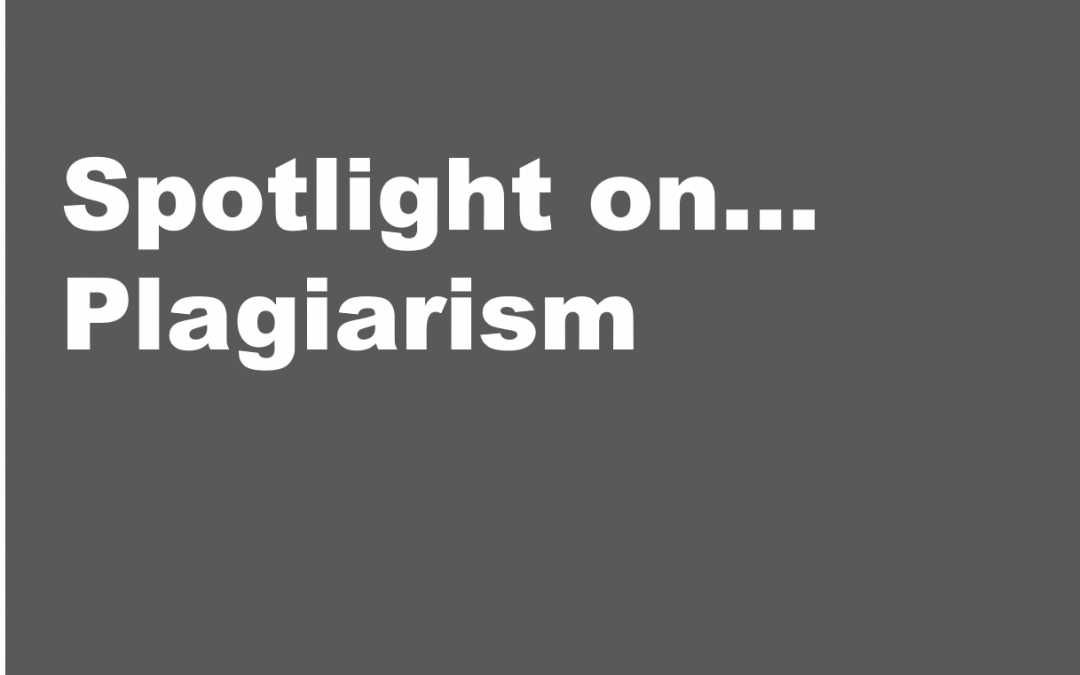One area which can cause serious problems for learners is referencing within assignments – either doing it incorrectly, or not at all. We’ve prepared these pointers to ensure you don’t fall into any plagiarism pitfalls and give you the rundown on referencing.
Do you know what plagiarism is?
Plagiarism is the practice of taking someone else’s work or ideas and passing them off as your own. You are plagiarising when you copy material from sources without correctly acknowledging these sources.
10 top tips to avoid plagiarism
- Be thorough – make a list of all sources as you consult them. This includes websites, books, articles and journals etc. Even if you don’t use them in the main body of your assignment, you can include them in the bibliography.
- Quote it – If you’ve included some information word-for-word, put quotation marks around it.
- Always cite your sources – where you’ve quoted a source, ensure you include the authors name and date of the source as your citing.
- Paraphrase – you don’t have to quote everything word-for-word, you can re-write the quote in your own words and provide a reference for it.
- Give credit where credit’s due – if you’re using someone’s idea, you don’t need to quote it, but you do need to say where the idea originally came from.
- Add references – find out how to Harvard Reference (more information below).
- Double check your references – make sure you have included all the sources you’ve used at the end of your assignment.
- When in doubt, always cite – if you’re not sure, it’s better to include, rather than omit
- Proof read – make sure you’ve not accidently committed plagiarism by proof reading your work. It’s easy to forget to include a citation, you haven’t rephrased your source adequality or you may have omitted a source when referencing.
- Seek advice – if you are in doubt please ask your tutor/assessor.
Take two minutes to try this quick quiz, you might be surprised at what does and does not constitute plagiarism; http://en.writecheck.com/plagiarism-quiz
How to Harvard Reference
Referencing is the process of acknowledging the sources you have used in writing your assignment. It allows the reader to access where this information came from and if it’s a valid source. It is important whenever you carry out a piece of research to include details of any sources of information you have used. Whenever you quote from, or paraphrase work written by someone else, you must acknowledge you have done so.
Why do I need to reference?
Referencing is an essential writing skill. Although at first it can seem complex and difficult, it soon becomes easier. Report writing requires you to research a range of information and evidence, in order to evaluate it in relation to your topic. You will need to refer to externally sourced information from a range of print, digital and other sources, all of which must be clearly referenced in your text.
Reading, understanding and correctly referencing the work of others in your assignments is important. By correctly referencing you will:
- Protect yourself against accusations of plagiarism by acknowledging the work of others
- Demonstrate you have researched the subject or topic
- Show your understanding of a topic
- Allow readers, of your work, to locate your sources easily.
Assignment writing involves using viable evidence to support and strengthen your own arguments. You should include references in your assignments, to:
- Include different points of view
- Support your points of view
- Assess, evaluate, compare and contrast information from different sources
- Emphasise a position you agree or disagree with
- Refer to other research and studies
- Demonstrate your knowledge of a topic.
You will use other people’s ideas to develop your work. When you do, it is important to clarify where the idea came from so that it does not seem you are trying to present other people’s ideas as your own.
Harvard Style Reference Generator
There are several Harvard Reference Generators available as apps or websites. We’ve found “Neil’s Toolbox” (Neils Toolbox, 2013) is a useful site to help you do this. This tool takes in the raw data – author, title, year of publication – and creates the reference in the correct format. It can be used for referencing books, e-mails, journals and websites. You can access it here: http://www.neilstoolbox.com/bibliography-creator/
More support?
If you require additional advice and guidance on the using of referencing methods and techniques, please ask your tutor/assessor, or email info@roveconsultancy.co.uk.

